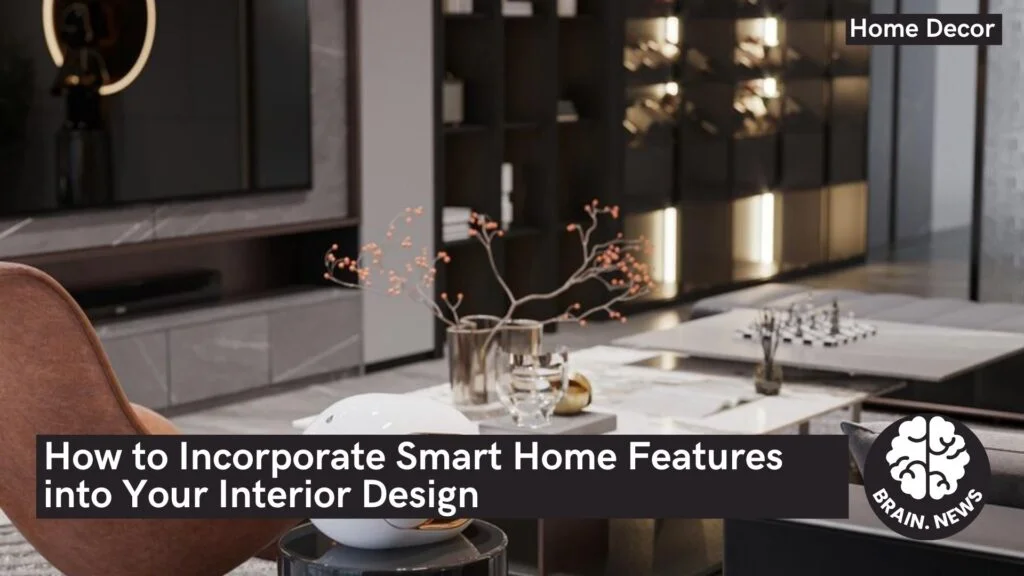Transform your daily life into a life-changing experience with a smart home! Find out all the ways you can improve energy efficiency, upgrade your security, and bring comfort home while making it even more modern with connected technology. How to Incorporate Smart Home Features into Your Interior Design, Imagine coming home after a long day and finding the lights automatically turned on, the perfectly tempered connected heating system, and your favorite music playing right when you get into the house-all this seems like something straight out of a science fiction movie.
Beyond being a passing fad, the connected home revolutionizes quite an extent the way we relate to our environment by literally opening doors to an impressive scale of convenience and control. IoT or voice assistants would be more effective in satisfying modern demands of personalization, safety, and energy efficiency. From the whys and wherefores behind home automation down to its numerous applications, this guide will uncover all that you need to be aware of in turning your home into a smart space.
How to Incorporate Smart: What is The Definition of a Smart Home

To benefit from a connected home, it is essential to define what a connected home really is. A smart home or smart house literally an extension of residential space with various technologically intelligent devices that interlinked for the control and automation of various home functions that can either controlled via mobile phone applications or voice commands and they communicate via the Internet.
Home automation has greatly evolved since the early days in the 1970s when the systems were costly, complicated, and installed only in rich people’s houses or buildings. This technology’s democratization has aided by the advent of IoT. Nowadays, home automation solutions are not only available but also affordable and easy to deploy, hence, accessible to even the low-income family. Remember the two key concepts: first, IoT is where ordinary things get connected to the Internet second, centralized home automation systems allow coordination of all devices for intuitive and seamless control.
How to Incorporate Smart: What are the Advantages of a Connected Home

Smart homes offer a multitude of services that cater to various needs. One of the most important offerings of smart homes is comfort during daily activities. Imagine a system that can automatically change the lights on the time of the day, or a thermostat that learns your preferences so that you can keep an optimal temperature without your involvement. This level of automation would allow you to concentrate on more pressing issues. Security is an essential aspect of home automation. Electronic locks and connected cameras are a few examples of intelligent systems that assure improved safety.
Another thing about home automation is the fact that it is amazing in energy efficiency. Smart thermostats, for example, perform heating and cooling settings to be compatible with schedules and current outside weather conditions. In rooms that used at the moment, smart lights automatically turn off. Some systems can even provide advice to help reduce your carbon footprint. Finally, personalization remains a significant one. Instead of a set of solutions, home automation systems developed according to your needs.
How to Incorporate Smart: The fundamental technologies required

The entire smart home ecosystem made up of a lot of different technologies. Regarding this, voice assistant tools such as Siri, Google Assistant, and Amazon Alexa are the most common ones. These serve as the main interfaces for the entire set of devices that can controlled via voices. Just imagine instant fulfillment after uttering: “Turn on the lights” or “Play a relaxing playlist”.
Another major element is intelligent lighting. Philips Hue and other brands have made it possible for consumers to customize the color and intensity of their light to create an environment appropriate for any given moment. The systems can even programmed to work by schedules-for instance, at wake-up time, turning on lights gradually in much the same way as a sunrise.
Conclusion

Home automation distinguished in intelligent situations dealing with temperature control. Smart thermostats such as Nest or Netatmo regulate the heating and cooling themselves according to their own logic; this ingenuity allows your comfort while saving energy. The same kind of systems can also operated remotely via an app. Security also enhanced by a suite of smart devices, including a range of cameras, video doorbells, and electronic locks. These allow for advanced protection and features, including but not limited to called by local emergency services or using facial recognition capabilities.
Moreover, a host of interconnected devices, such as smart refrigerators, programmable washing machines, or smart outlets, automate certain activities in your living. In contrast, entertainment systems change your home into a true multimedia setting by incorporating connected audio systems and smart TVs.
Read more: The Best Space Saving Furniture Ideas for Compact Living
